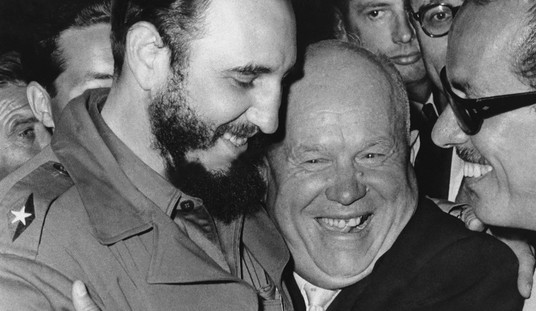While the recent catastrophe in Las Vegas has literally set new records for awfulness, it’s worth remembering that 2015 was also a year where some high profile, mass shooting events took place. If I asked you to remember what the biggest such attacks were for that year, which ones would you recall? The one that received the most press was probably the San Bernardino terror attack, but that one only took third place in terms of the total number of people shot. Coming in at second was the mass shooting which the media so studiously avoided that almost nobody ever heard of it… Bunny Friend Park. But number one on the 2015 list was the biker gang shootout at the Twin Peaks restaurant in Waco, Texas.
Believe it or not, it’s been almost two and a half years since the Bandidos and the Cossacks faced off in that massacre, but only now are we seeing the first of the big trials kicking off. This week sees Jake Carrizal, the Dallas Chapter President of the Bandidos going before the bench. (Associated Press)
Steel barriers and sheriff’s deputies surrounded the courthouse in Waco, Texas, in a show of heightened security as the trial began for an alleged leader of the Bandidos biker gang in connection to the deadliest shootout between biker groups in U.S. history.
But experts say the trial — the first stemming from the fatal May 2015 shooting — could reach far beyond the single case, as the government tries to convict other leaders and dozens of members…
The first to stand trial in Waco is Christopher “Jake” Carrizal, the Bandidos’ Dallas chapter president, whose trial began last week. Experts say a conviction in the case could have a domino effect by convincing other bikers to plead guilty and testify.
One immediate question which comes to mind is how it took so long to get the wheels of justice in motion. In this situation it’s understandable. There were so many people to process, so much physical evidence to catalog and so many witnesses that it was a daunting mountain for law enforcement to climb. A few lower level gang members have already entered guilty pleas, but the top level leaders are going to be facing serious jail time if a conviction is obtained.
The way these trials are being handled may provide a template for dealing with other gangs. It’s rare to achieve such a mass arrest as was done here, but if the first officer of one of the gangs gets put away for life, other members may begin rolling on the top level leadership in exchange for a more lenient deal.
For my money, the real question is whether or not this approach can be transferred over to other gang violence scenarios. Going after biker gangs probably doesn’t seem like much of a priority in the larger scheme of things. The FBI estimates that there are probably less than 40K members of actual “outlaw” biker gangs in the country and a lot of them are only involved in lower level crime. (By contrast, MS13 is estimated to have more than 70K members and that’s just one street gang.)
That’s not to say that the outlaw biker gangs aren’t up to some bad behavior or don’t represent a serious danger. Their dealings in the meth trade alone make them worth pursuing. But they really don’t hold a candle to MS13, the Bloods, the Crips and the armies of smaller gangs holding turf in cities across the country. And while it’s still no excuse for violence, biker gangs shooting up each other are at least somewhat less societally damaging than the ones that are mowing down innocent bystanders and robbery victims.
So, with that in mind, could more aggressive enforcement of this type be replicated in places like Baltimore and Chicago? Could an intensive effort to clear those hundreds of murder cases offer an opportunity to round up a gymnasium full of gang members in one series of raids, lock them down, and use a couple of death penalty cases to get some of the others to turn state’s evidence on the leadership? And, while I’m not trying to be too depressing here… would it do any good in the long term even if we could?
It seems to me that street gang violence is endemic in some areas on a generational scale. Even if you managed to put away the gang leaders across an entire city for lengthy stretches in federal prison, the demand for their “services” would still exist and new, younger criminals would rise up to take their place. Real reform will only come from inside the families and communities in these neighborhoods, I fear. And that’s if it ever comes at all.









Join the conversation as a VIP Member